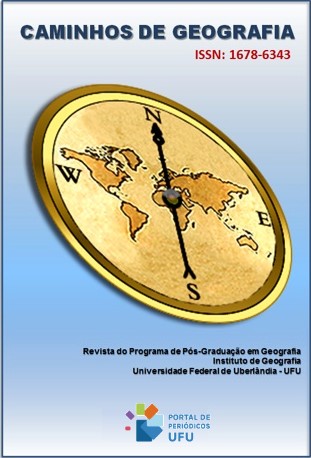WHAT DO THE PHYTOLITES, SPONGE SPICS AND SHELLS “TELL US” ABOUT THE PAST OF THE SHELL-MIDDEN OF THE FOZ DO RIO PORUQUARA, GUARAQUEÇABA, PARANÁ?
DOI:
https://doi.org/10.14393/RCG249465891Keywords:
Data “proxies”, Archaeological Site, PaleoenvironmentsAbstract
The different past human occupations are correlated to cultural filters intertwined with paleoenvironmental conditions, among these vestiges are the sambaquis, which can be characterized as artificial hills. The research was carried out in the sambaqui of Foz do Rio Poruquara, city of Guaraqueçaba, Paraná, aiming to interpret the paleoenvironmental significance of phytoliths, sponge spicules and mollusc shells recovered in the study area. In the samples of stratigraphic profiles, from the Museu Paranaense collection, for the recovery of phytoliths and sponge spicules, protocols had already described in the literature for these "proxies" were used, while the shells were identified by means of a comparative method. A relative dating of approximately 4,000 years BP has been established for the sambaqui of Foz do Rio Poruquara. Based on the occurrence of phytoliths along the profile, it was possible to establish three zones with different vegetation characteristics: I) base: grasses; II) intermediate: grasses-shrub; III) top: arboreal-grassy. As for sponge spicules, it was found that the sambaqui area was always under the influence of sea level fluctuations. The mollusc shells indicate that during the entire period of construction of the sambaqui the vegetation maintained characteristics similar to those observed today (bays, estuaries and mangroves).
Downloads
Downloads
Published
How to Cite
Issue
Section
License
Copyright (c) 2023 Fernando Henrique Villwock, Mauro Parolin, Claudia Inês Parellada

This work is licensed under a Creative Commons Attribution-NonCommercial-NoDerivatives 4.0 International License.
Autores que publicam nesta revista concordam com os seguintes termos: a) Autores mantém os direitos autorais e concedem à revista o direito de primeira publicação, com o trabalho licenciado sob a Creative Commons Atribuição-NãoComercial-SemDerivações 4.0 Internacional. b) Autores têm permissão e são estimulados a publicar e distribuir seu trabalho online (ex.: em repositórios institucionais ou na sua página pessoal), já que isso pode gerar alterações produtivas, bem como aumentar o impacto e a citação do trabalho publicado. c) Em virtude de aparecerem nesta revista de acesso público, os artigos são de uso gratuito, com atribuições próprias, em aplicações educacionais e não-comerciais.











